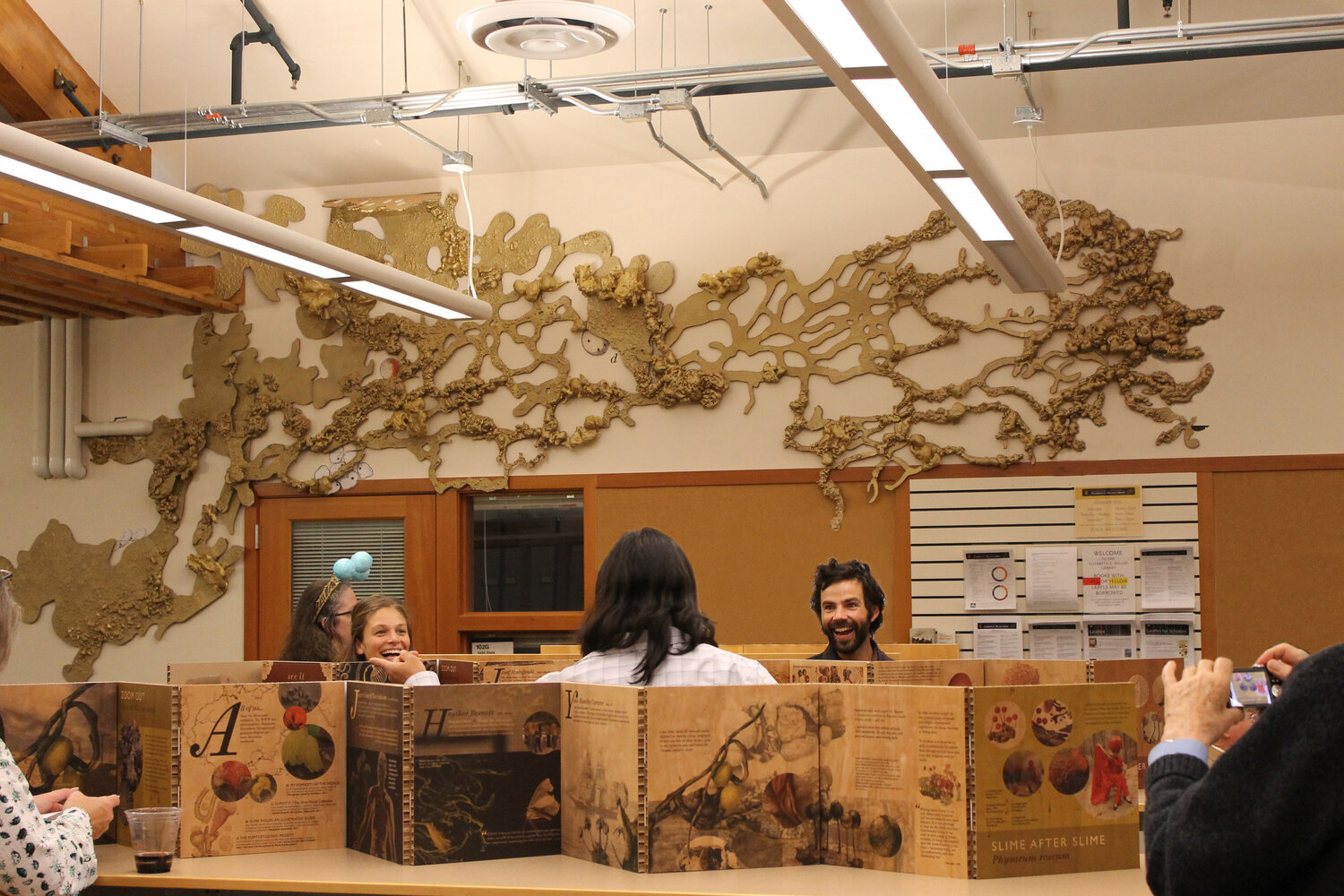
An exhibit about 400 years of artists devoted to slime molds
at Seattle Center for Urban Horticulture’s Library
Slime molds are a diverse group of microorganisms with an unusual life cycle that have long sparked curiosity in artists and scientists.
If you’ve ever seen something that looks like hot pink bubble gum or bloated Nerds candy bursting out of a decaying log, you’ve found at least one species of slime mold (AKA myxomycetes). Each slime mold starts its life as a large, one-celled blob (plasmodium) that travels over leaf litter and bark in search of bacteria and other tiny snacks. In time, the enlarged plasmodium settles and sends up an array of intricate, colorful, spore-bearing reproductive structures (“fruiting bodies”) that, with keen eyes, one can find in nearly every biome besides oceans.
I developed and designed this exhibition about artists around the world who have been captivated by slime molds over the last four centuries. Integrated into a horticultural library, the exhibit explored how culture shapes perception and representation of the natural world, through the lens of these tiny wonders. Graphics showcased historic illustrations, a microscope station let visitors try their hand at drawing some sparkly specimens, and vintage educational films animated the life cycle of “magic myxies.” The Slime Mold Revelation brought more first-time visitors to the CUH than any prior exhibition.
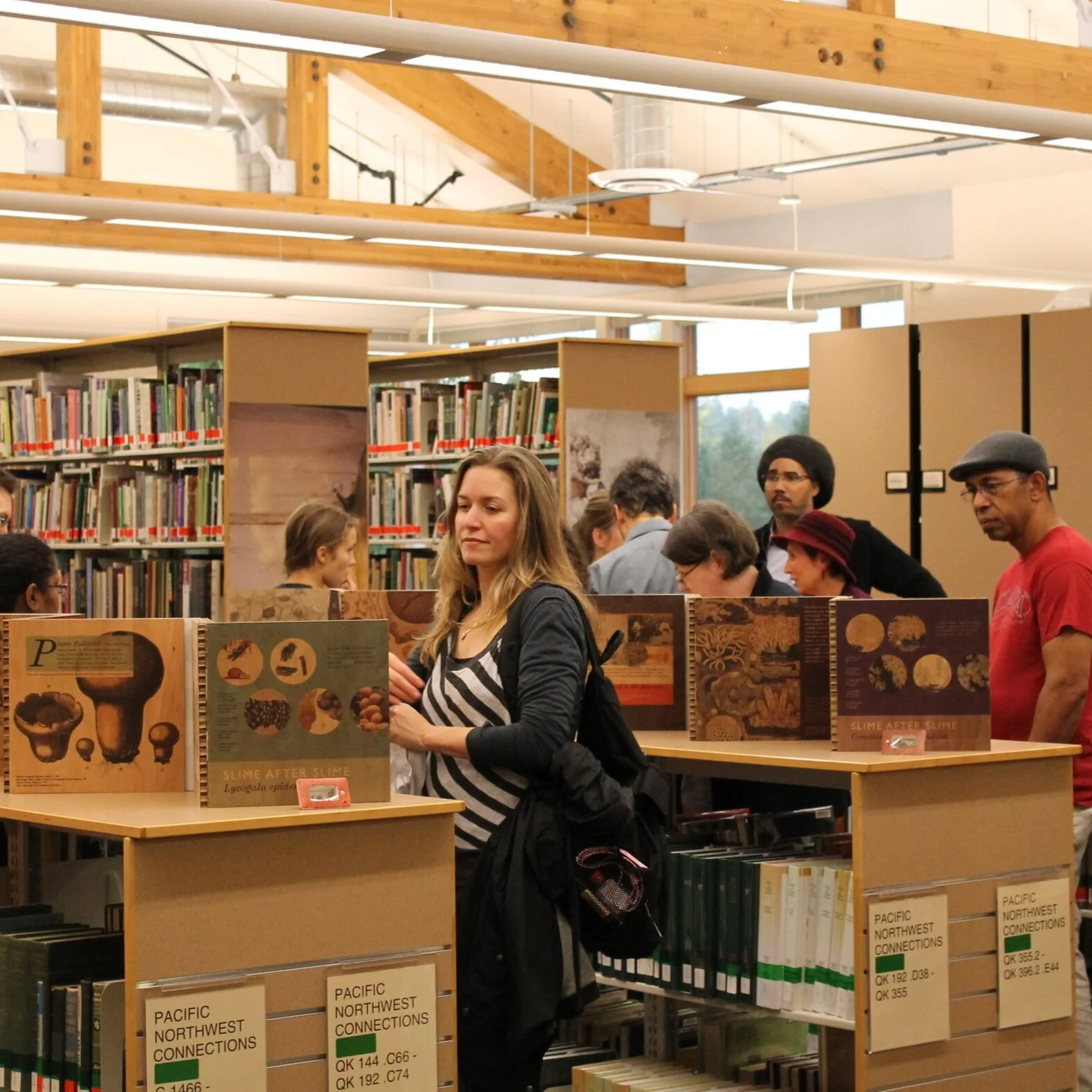
Visitors discovered how artists' depictions of slime molds have evolved over time and vary depending on cultural context.
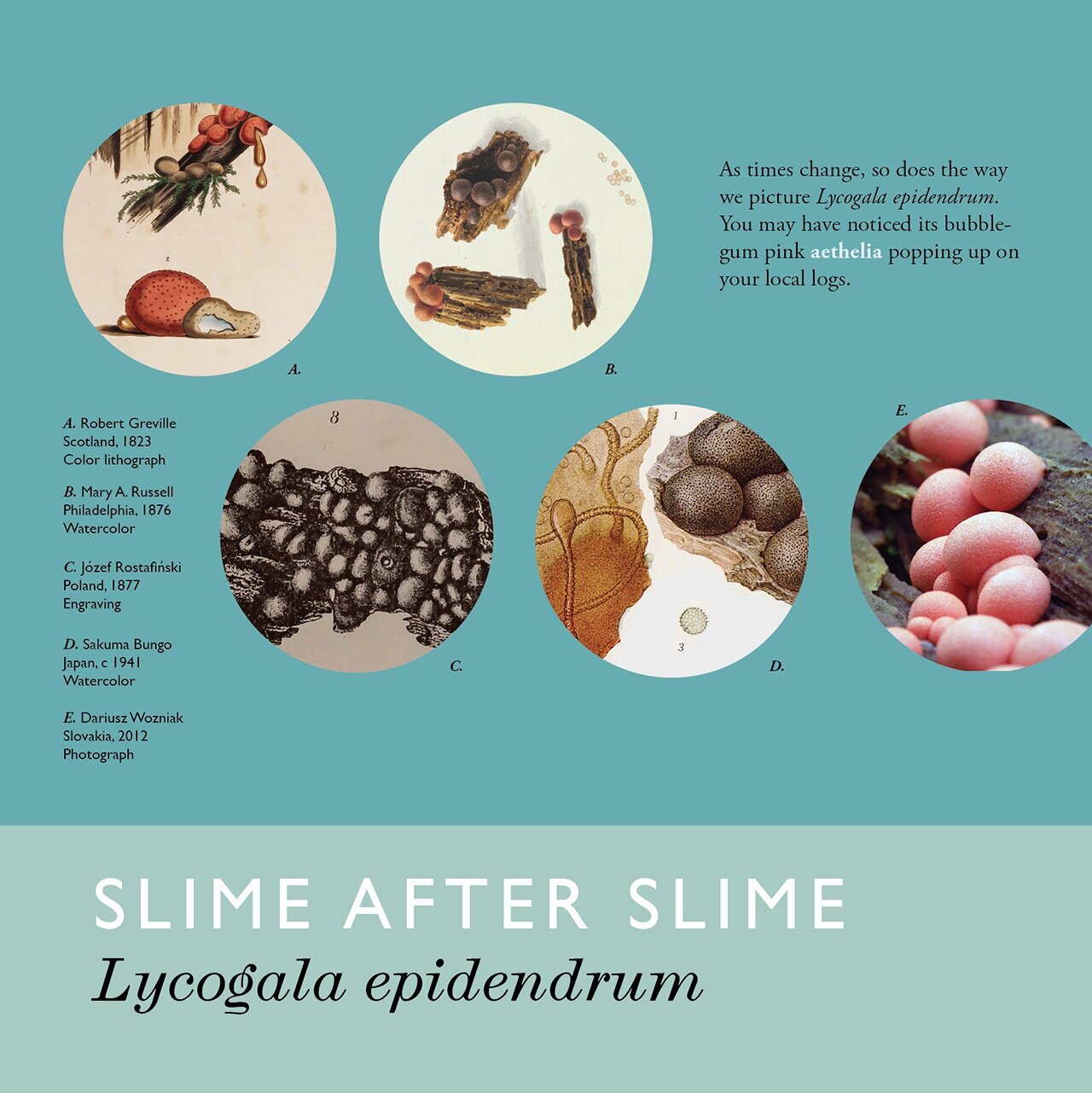
Graphics highlighted different artists' views of common species.
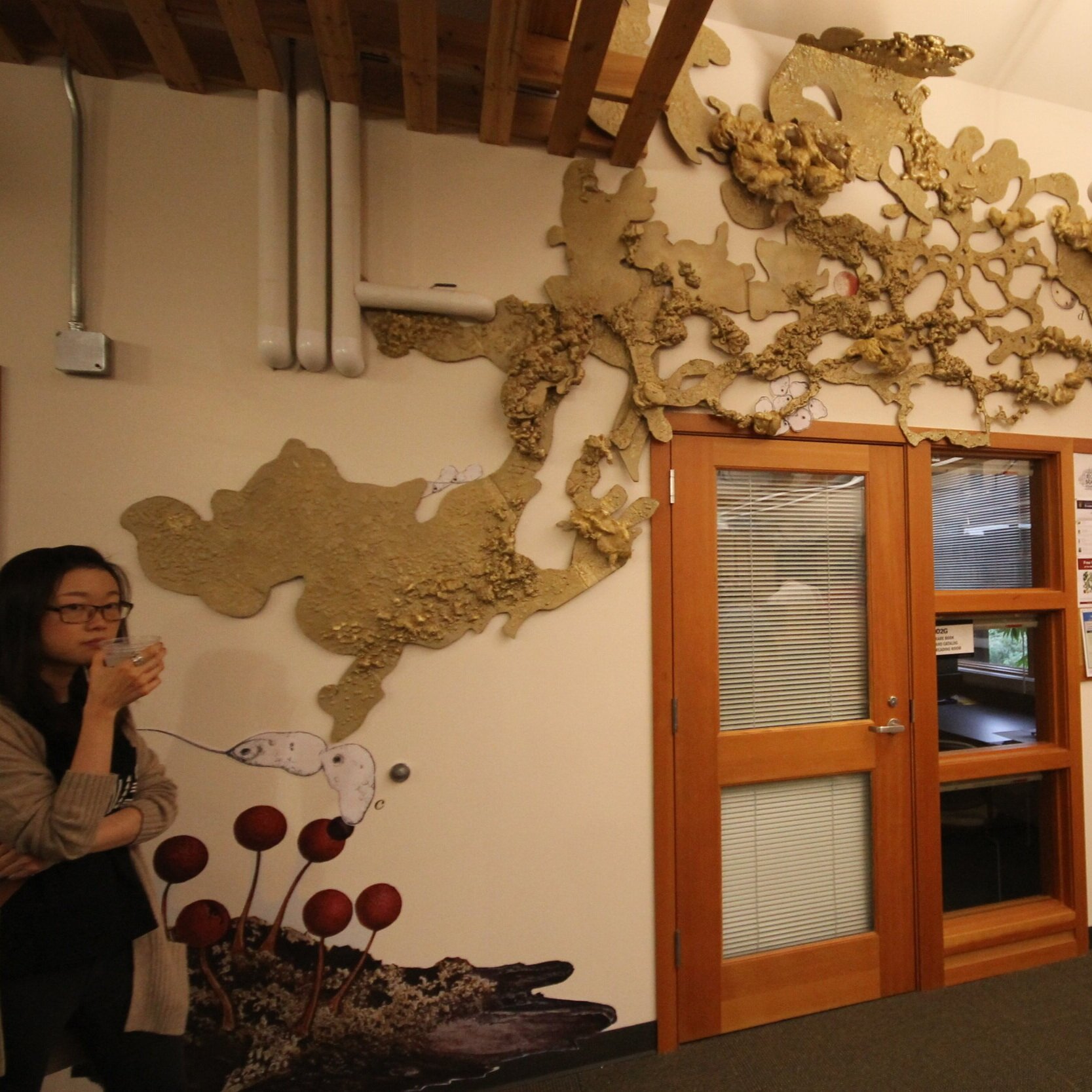
A slime mold plasmodium emerged from red fruiting bodies and unfurled across the library.

Upon entry, visitors grabbed a little guidebook to the life cycle interpreted on the wall.
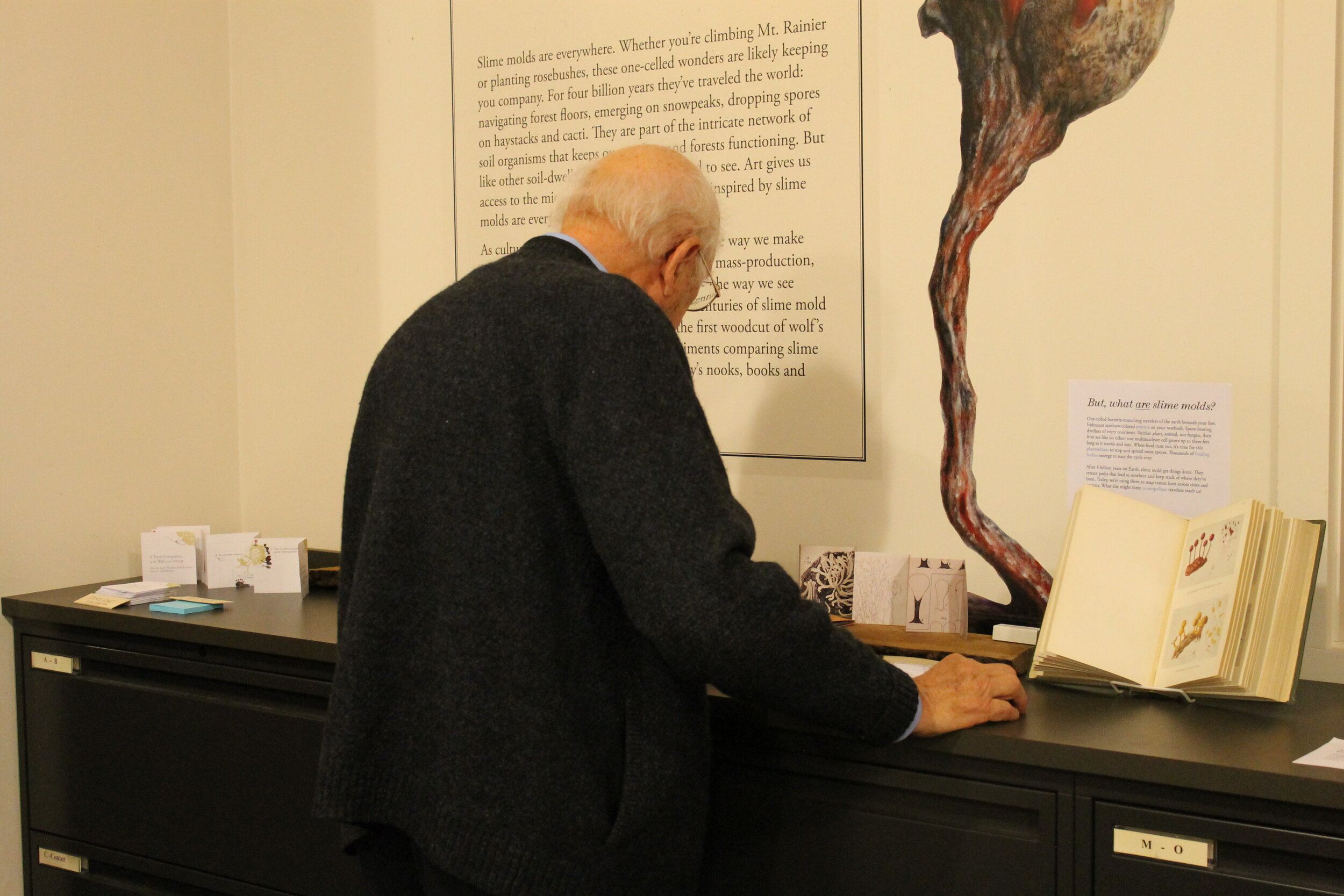
Scientists who have long studied slime molds came to visit.
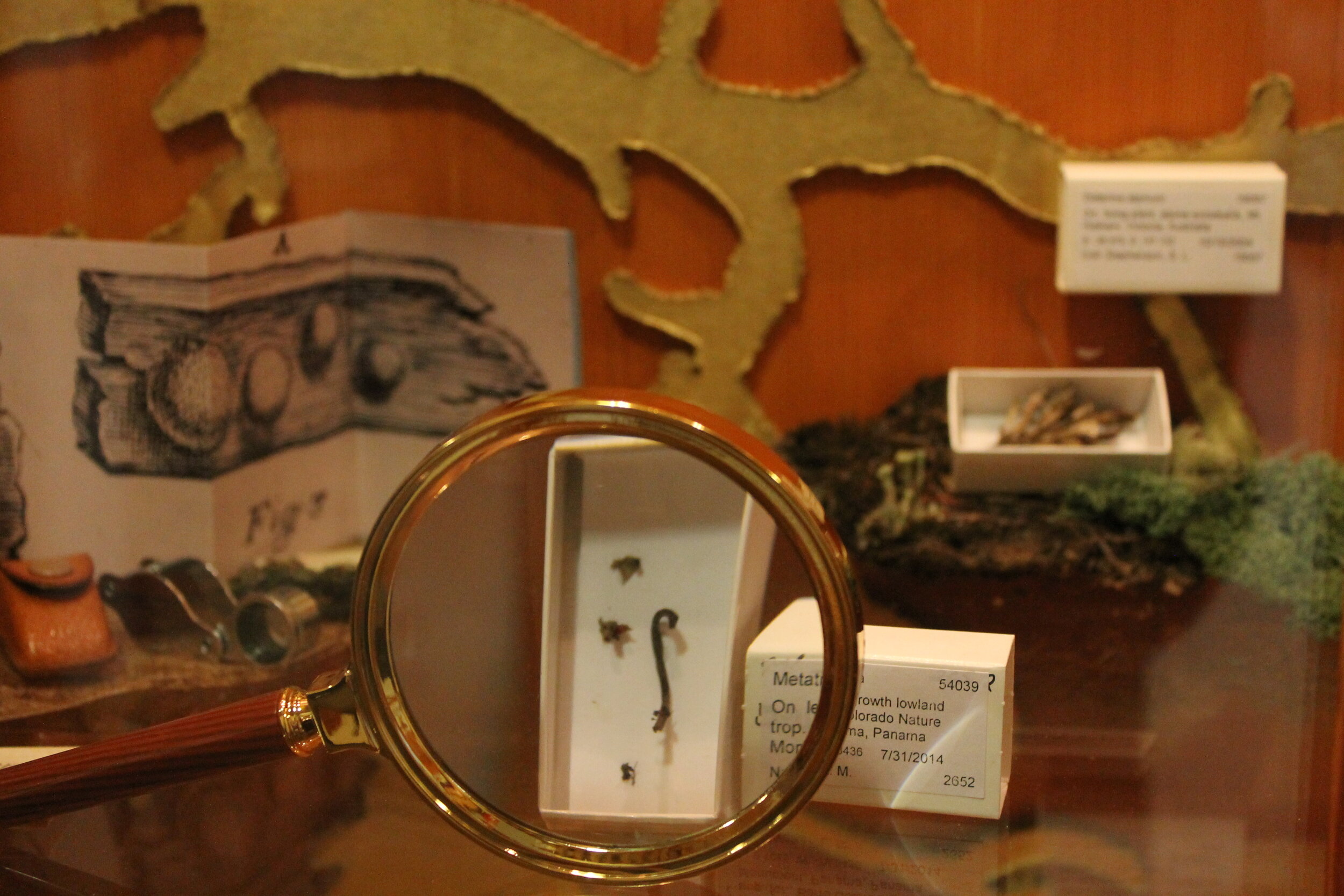
Loaned specimens from various university collections were on display.
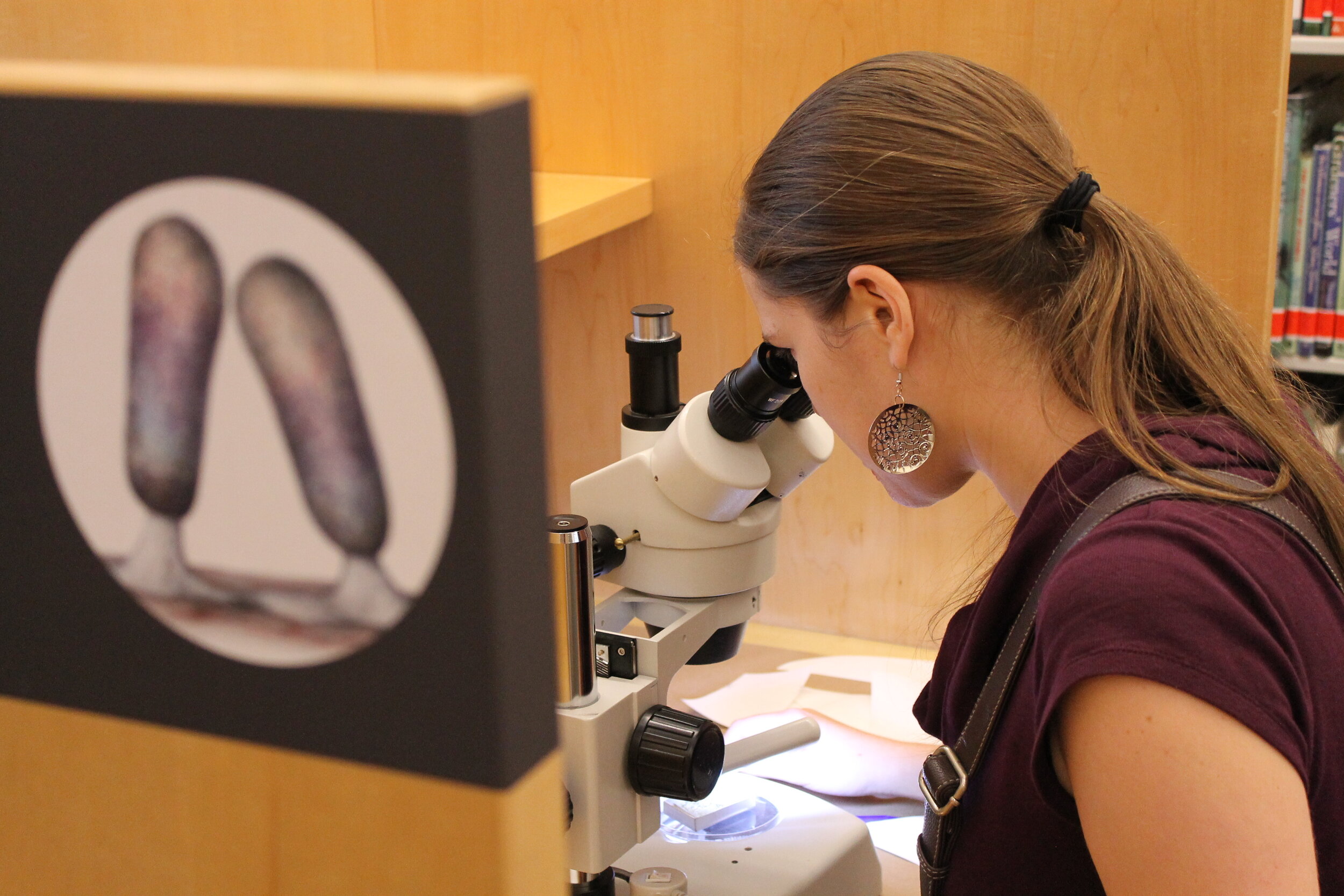
Visitors zoomed in on a rainbow-colored specimen and tried their hand at drawing it.
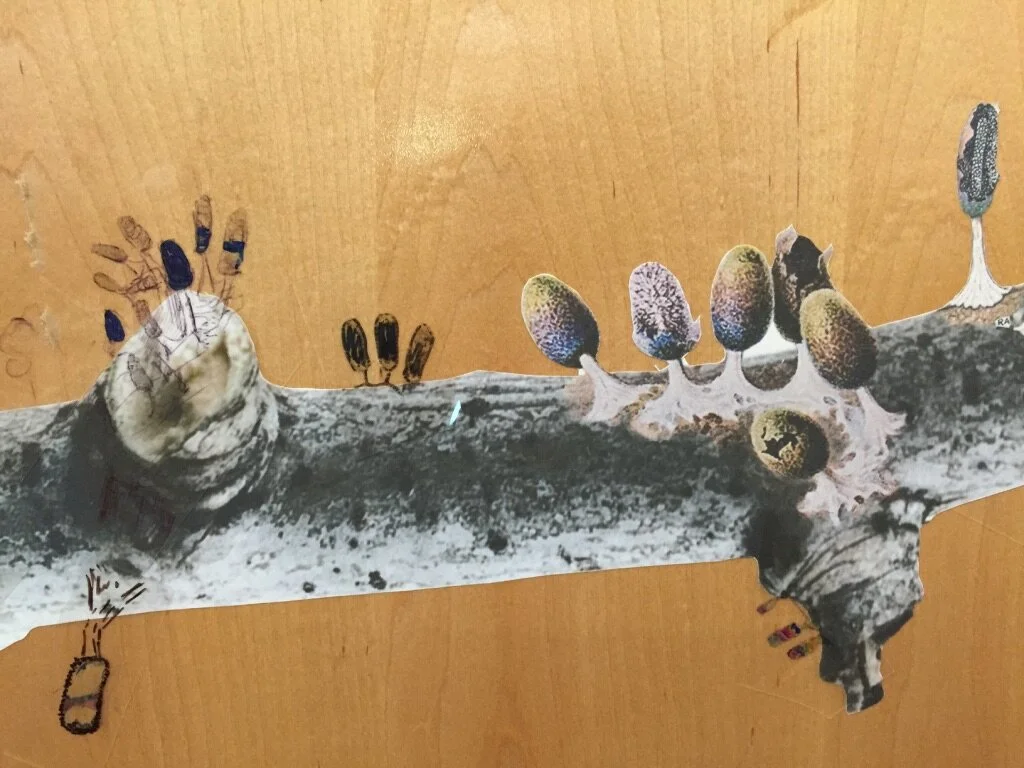
Over the months, a collection of visitors' drawings grew along this twig graphic.
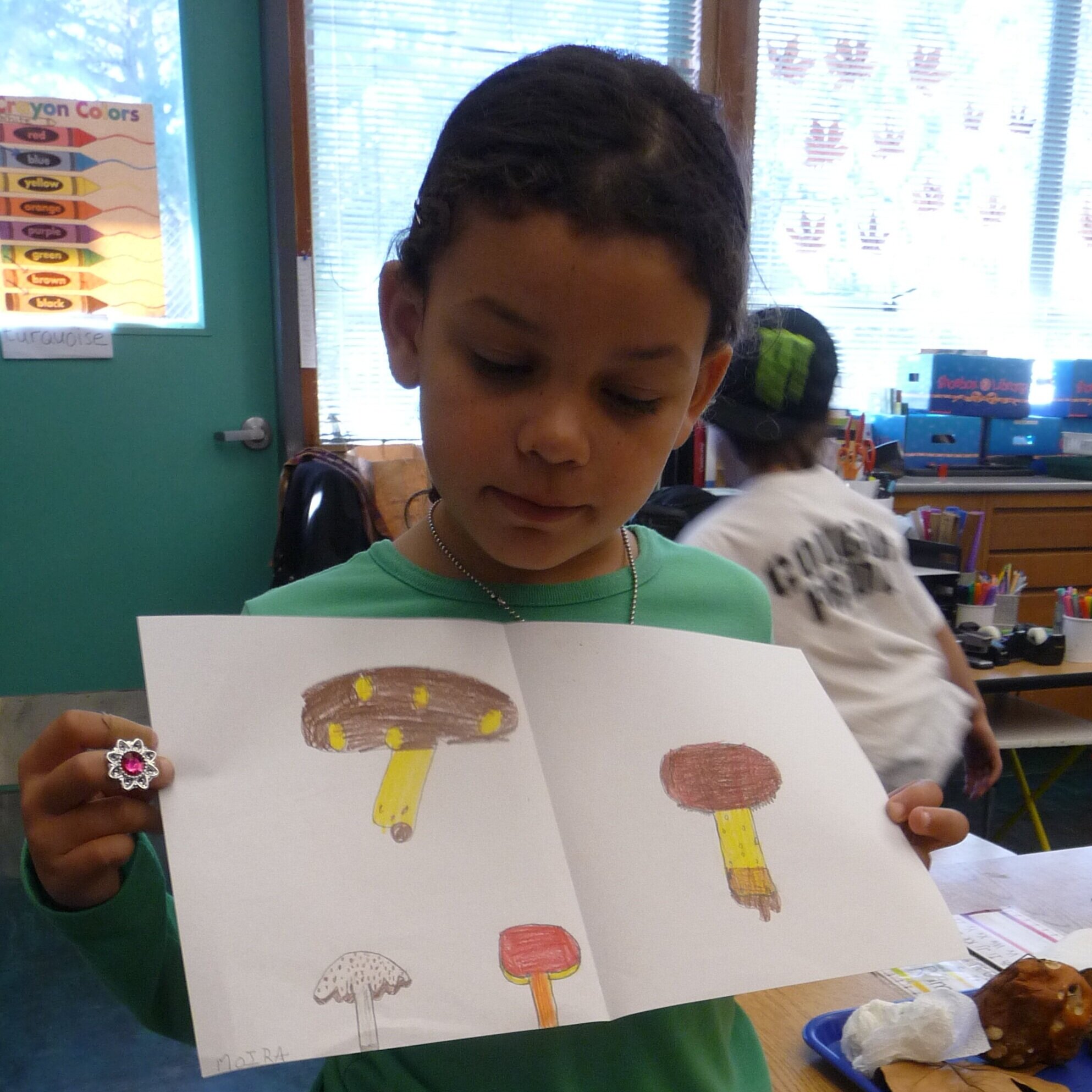
Summer campers made some awesome slime mold art.
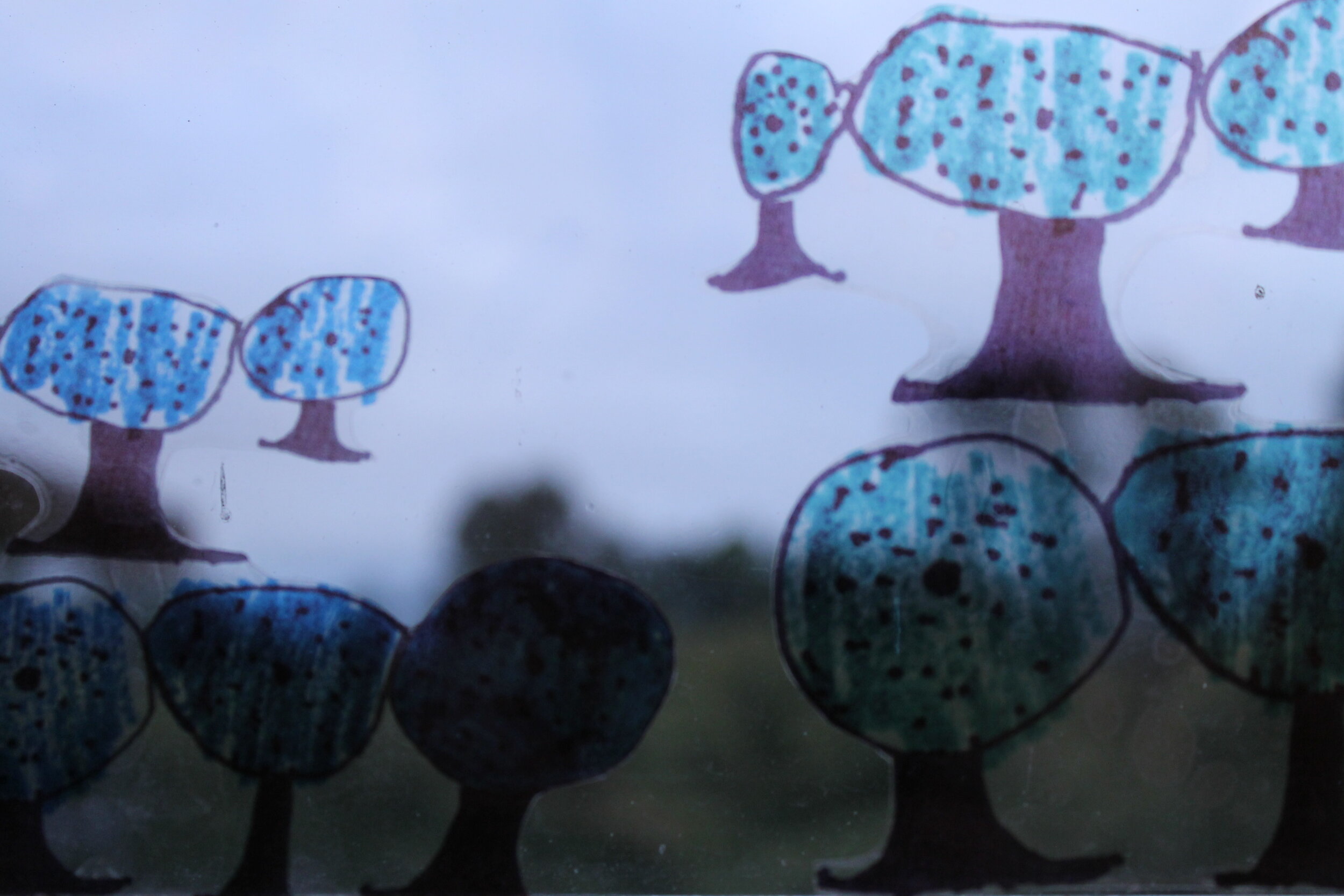
Summer Campers' drawings brighten up the library's kids' corner.
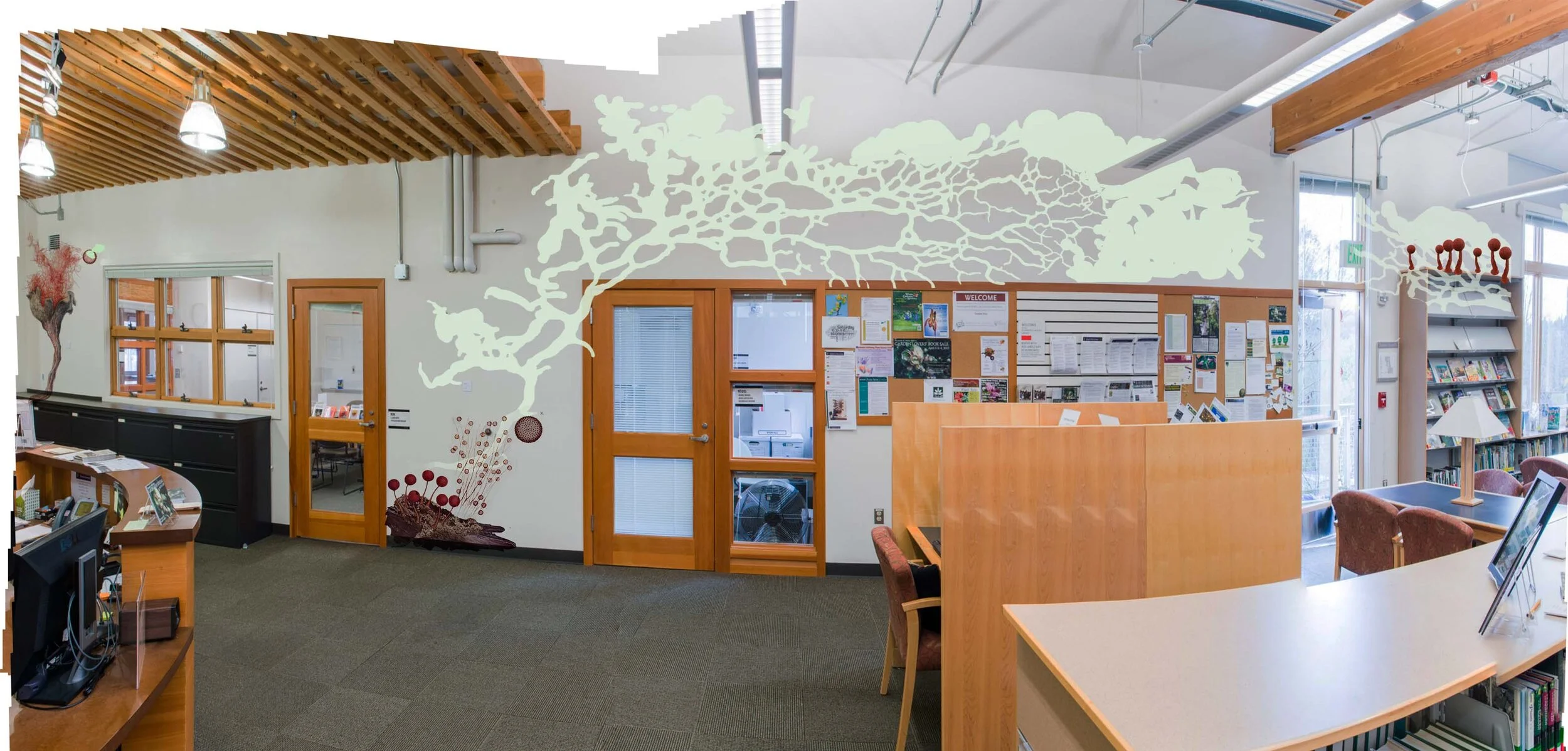
Behind the Scenes: a photoshopped sketch guided final fabrication of the gold "plasmodium".
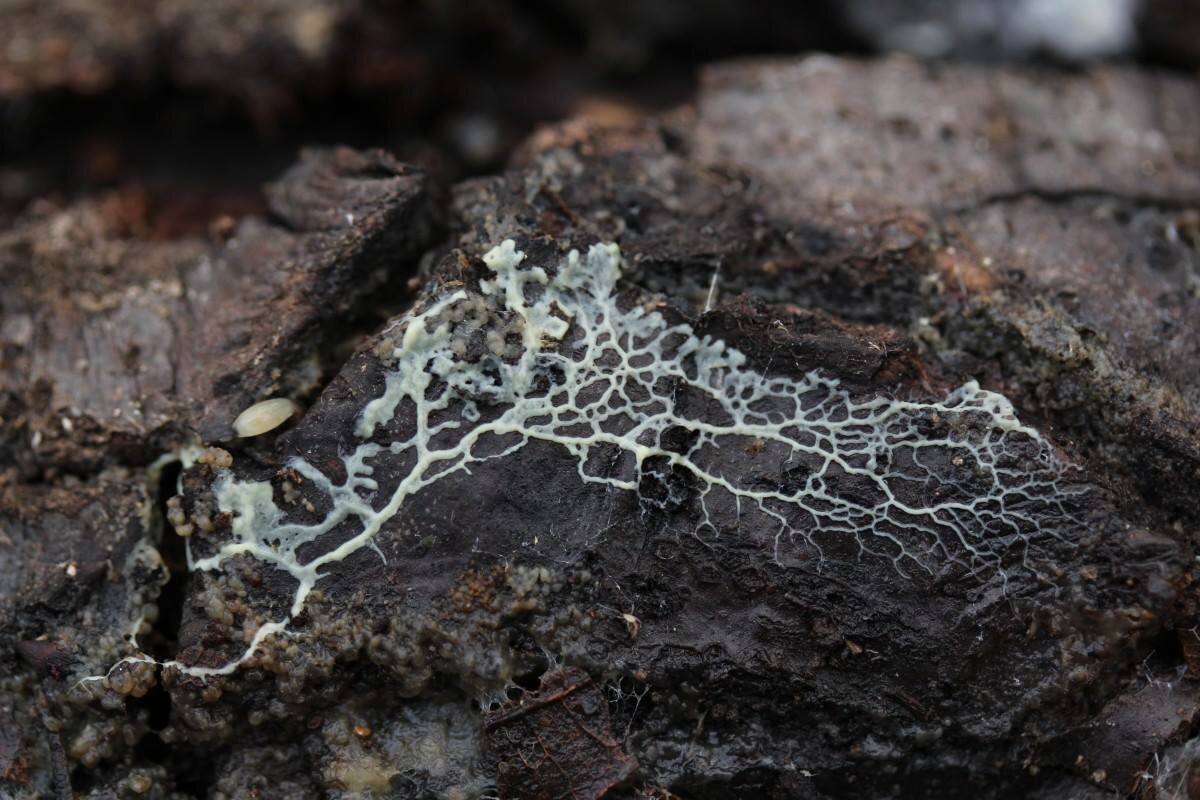
Behind the Scenes: inspiration for the giant slime mold on the library wall.



